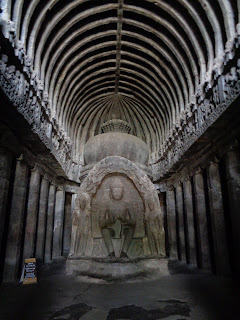I spent the first two weeks of February in Thies at the Peace Corps Training Center for my two-week technical In-Service Training (IST). It was the first time I had seen most of my fellow stage-mates (other than those in Kedougou) in about two months. During the course of the two weeks, we took a few field trips to surrounding areas, one of which is called the Beer Sheba Project.
The Beer Sheba Project is a 100 hectare area in the Thies region of Senegal that has been reforested using farmer managed natural regeneration (FMNR) techniques and now serves as a training ground for students from all over West Africa to learn improved farming and natural resource management techniques. It was started 17 years ago by a Christian organization. The surrounding area is practically a desert; nothing more than a few baobob trees and small hills prevent you from seeing far off into the horizon. The area that is now Beer Sheba began as this same desolate landscape. The first thing Beer Sheba did was to fence in their entire 100-hectare area to prevent wandering livestock from eating anything that began to grow inside the fence. Then, they selectively pruned the existing very small existing "trees" and shrubs to encourage vertical growth. These are the basics of FMNR: protect an area and prune existing trees so that they grow tall and straight.
About ten years into the project, Beer Sheba began to add additional components to the protected area. They began farming, gardening, Moringa cultivation, and raising animals on some of their enclosed land. A few years ago Beer Sheba began to invite interns from all over West Africa to spend a year learning about FMNR and sustainable farming practices. They now host about 12 interns each year; each gets their own plot of land to practice farming techniques for the year. Other than grains (rice, corn, etc.), Beer Sheba grows all of its own food. Overall, Beer Sheba was like a paradise; a native-species forest created from nothing that now hosts a huge variety of productive crops.
Based on what I have seen in my village, there are two expensive investments that made this whole projects possible: a fence around the area and wells with solar water pumps. A lot of great work was done was done with this area, but it was all made possible by these pieces of infrastructure. Beer Sheba was a great example of what can be done with a sizeable up-front investment, but it was a little discouraging to know that no matter what I do in my village during the next two years, it will not be as beautiful as Beer Sheba. As a Peace Corps volunteer, this level of environmental transformation is unattainable for financial and time reasons. I felt better once I remembered that Peace Corps has different goals and resources than Beer Sheba. This project still stands as a great example of just how many trees are trying to grow in a desolate-looking area--if they are protected and pruned they will thrive.
 |
| Beer Sheba. This area used to be a desert with only a few baobob trees 17 years ago. Moringa processing center being built on the right |
 |
| Another view of Beer Sheba from their observation tower |
 |
| Beer Sheba garden area. With enough water, kale and other greens can grow here. We ate some of these vegetables for lunch when we visited. They were delicious |






Comments
Post a Comment